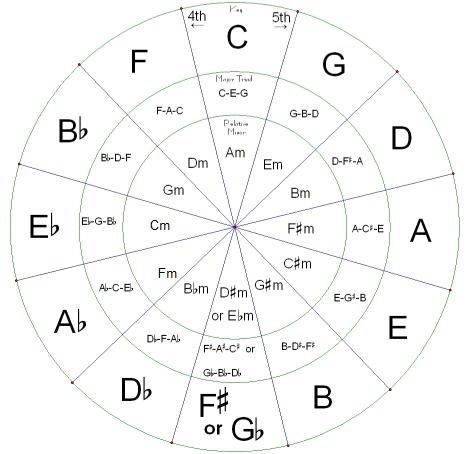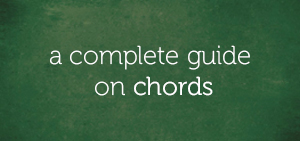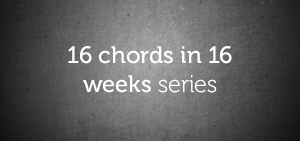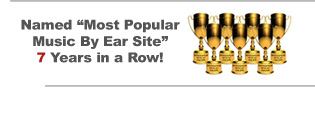By now, you should know your major scales. If you don’t, there’s plenty of lessons on here to get you up to speed.
But that’s not what I want to talk about today.
I want to talk about an entirely different way to look at scales. A way that will help you to learn and understand chord progressions a lot faster! (Isn’t that what we all want? chord progressions create SONGS!)
Don’t get me wrong… scales are great. I’m a great advocate of learning scales in the beginning.
I just don’t like when people get wrapped up into playing them just to “warm up” (and stuff like that). I think they are much more important than that.
They define the major keys you’ll play in. Understanding them is the key to playing smoothly in all 12 keys.
So I want to give you the “CIRCULAR” way to understand major scales. Yes, “circular!”
By now, you know that I’m infatuated by the circle of fifths. I think it’s a wonderful way to teach music. I think it cuts through all the baloney and if you really understand it, you can get really far… really quickly.

Take the C major scale for example:
C D E F G A B C
1 2 3 4 5 6 7 1
Here’s how you would look at it circularly:
C major (circularly)
B E A D G C F
7 3 6 2 5 1 4
I bet you’ve never seen the C major scale like that before.
And the thing is…
All the notes that would normally be in the scale are represented. Nothing has changed in that regard. Just the order of notes. We’ve rearranged them into a different pattern.
A pattern you’ll run across time and time again in song after song (if you haven’t already).
And this, my friend, is the secret.
Think about songs you’ve played in the key of C major.
Did they move from keynote to keynote like this: C D E F G A B C?
Or did you see a lot of chords flowing like this: “D – G – C” or “C – F” or “G – C – F” or “A – D – G” or “E – A – D – G.”
And notice, I got those all from the circular scale above.
This is how music flows.
So to understand the pattern, “7 – 3 – 6 – 2 – 5 – 1 – 4” is extremely important. In fact, there are entire songs that use this whole stretch of tones, all in a row.
For now, just ponder this. Try to learn this order of things in all 12 keys.
Hint: Soon you’ll find much overlap. In other words, the order you see here will NEVER change in another key. If the new key you’re learning has a “B” in it, for example, it will always be followed by an “E.”
That is the cool thing… you don’t have to learn all 12 keys from scratch… as long as you start getting the pattern.
This will be key to playing REAL chord progressions in ALL 12 keys… in REAL songs!
Until next time —







Comments on this entry are closed.